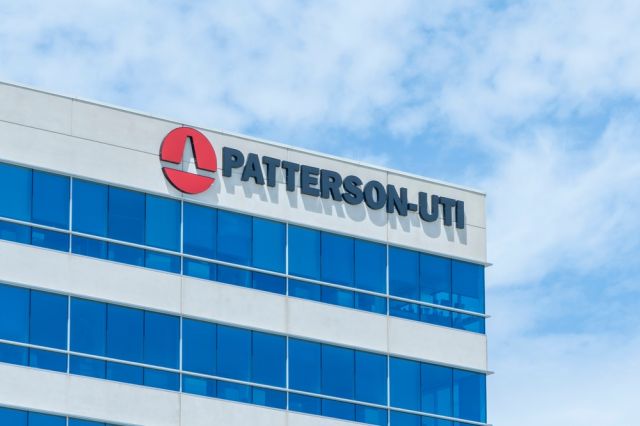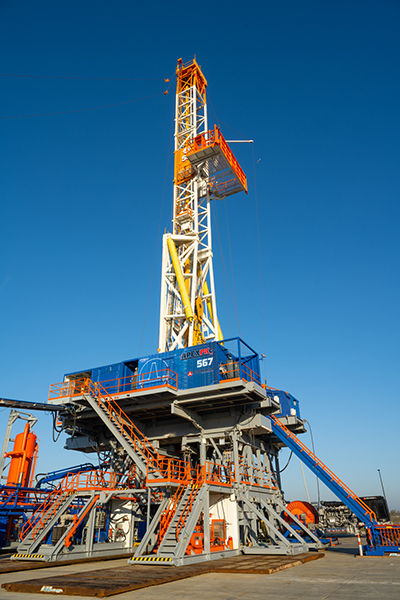
The company expects to convert 40% of its adjusted EBITDA to free cash flow in 2024, Patterson-UTI CFO Andrew Smith said during the call. (Source: Shutterstock)
It's increasingly clear that there will be winners and losers in the oilfield over the next several years, Patterson-UTI President and CEO Andy Hendricks said during a July 25 conference call with investors.

Less than a year out from the closing of its merger with NexTier and its acquisition of Ulterra Drilling Technologies, the oilfield services company is taking strides not to be the latest has-been.
Patterson-UTI’s newly combined platform has been beneficial, allowing the company to provide its customers with “an integrated suite of services” and lower debt, Hendricks said.
“Patterson-UTI continues to leverage the competitive advantages of its combined platform to drive improving service quality, greater efficiencies and solid free cash flow generation,” Evercore ISI analyst Jason Bandel wrote in a July 25 report.
The company expects to convert 40% of its adjusted EBITDA to free cash flow in 2024, Patterson-UTI CFO Andrew Smith said during the call.
“The free cash flow generation capability was a key reason Patterson-UTI made those recent acquisitions and the company has returned $407 million, including $309 million in share repurchases, since closing on the acquisitions,” Bandel wrote.
Patterson-UTI’s electric frac technology helped to offset recent natural gas short-term activity declines seen in the second quarter, Hendricks said.
“Drilling products had another strong quarter with additional market share gains and margin growth, despite the impact from normal seasonal spring break up in Canada,” Hendricks said.
The company expects drilling activity in the U.S. to continue steadily through the rest of the year and pick up in 2025, particularly in natural gas basins, Hendricks said.

"For Patterson-UTI, we believe we have additional paths for capital returns growth that should exceed the industry rig count recovery,” Hendricks said.
Once pipeline construction in the Permian—such as the Matterhorn—are complete, the region’s takeaway capacity will improve and demand for equipment that can burn natural gas will pick up, Hendricks said.
“About 80% of the equipment that we're operating today burns natural gas, and we are sold out of this type of equipment,” he said. “So when demand increases, we are going to need more high-spec equipment that can burn various forms of natural gas.”
Outside of natural gas-powered frac equipment, data centers are anticipated to be big drivers of the demand for power.
“An individual server component in the data center built today requires three times the energy consumption of a previous network data service, and an AI search takes 10 times the amount of energy as a standard internet search,” Hendricks said.
Patterson-UTI also intends to step in for the local utilities unable to supply the power demand necessary for E&Ps electrifying their production facilities, the company said in the call.
And outside of the oil and gas industry, other industries may need some extra power too, Hendricks said.
“The demand for power outside of utilities is real,” he said.
Following its acquisition of Ulterra, Patterson-UTI is also in the early stages of international growth, particularly in the Middle East and offshore markets, Hendricks said.
“We believe this is just the beginning of tapping into this potentially large market and we will continue to use our capital allocation strategy to enhance our returns over time,” he said.
Recommended Reading
Not Sweating DeepSeek: Exxon, Chevron Plow Ahead on Data Center Power
2025-02-02 - The launch of the energy-efficient DeepSeek chatbot roiled tech and power markets in late January. But supermajors Exxon Mobil and Chevron continue to field intense demand for data-center power supply, driven by AI technology customers.
Waterous Raises $1B PE Fund for Canadian Oil, Gas Investments
2025-04-01 - Waterous Energy Fund (WEF) raised US$1 billion for its third fund and backed oil sands producer Greenfire Resources.
Confirmed: Liberty Energy’s Chris Wright is 17th US Energy Secretary
2025-02-03 - Liberty Energy Founder Chris Wright, who was confirmed with bipartisan support on Feb. 3, aims to accelerate all forms of energy sources out of regulatory gridlock.
Stonepeak Backs Longview for Electric Transmission Projects
2025-03-24 - Newly formed Longview Infrastructure will partner with Stonepeak as electric demand increases from data centers and U.S. electrification efforts.
Lion Equity Partners Buys Global Compression from Warren Equipment
2025-01-09 - Private equity firm Lion Equity Partners has acquired Warren Equipment Co.’s Global Compression Services business.
Comments
Add new comment
This conversation is moderated according to Hart Energy community rules. Please read the rules before joining the discussion. If you’re experiencing any technical problems, please contact our customer care team.





